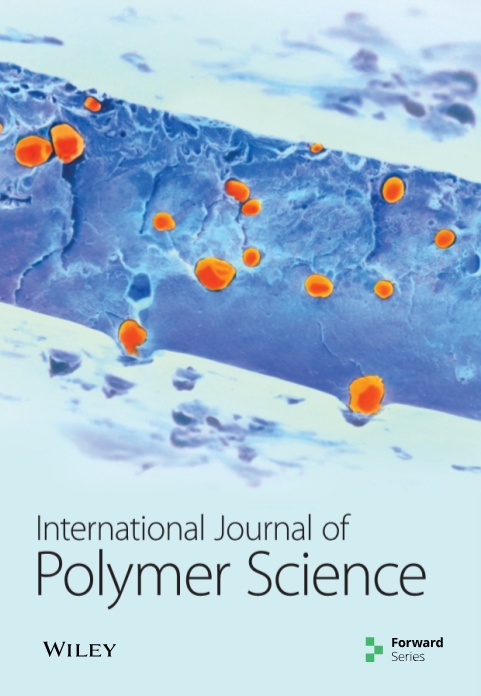草木株龄和株高对纸浆和造纸纤维形态和化学成分的影响
IF 4.4
4区 化学
Q2 POLYMER SCIENCE
引用次数: 1
摘要
本研究考察了深海牛膝秆的化学成分、纤维形态和物理性质,以评估其制浆潜力。纸浆和造纸工业技术协会(TAPPI)和富兰克林的方法已被用于实验。统计分析表明,深海稻的化学成分受植物年龄的影响。秆中纤维素的含量随着年龄的增长而增加,而手工提取的含量则随着年龄的增加而减少。三年生深海稻的平均化学成分为49.26±0.13 wt%,21.31±0.15 wt%和20.63±0.12 纤维素、半纤维素和木质素含量分别为wt%。1、2和3年龄植物的纤维素、木质素、灰分和提取物含量存在显著差异(P<0.05)。秆的位置也影响着深海稻的纤维形态。纤维的长度、直径、细胞壁厚度和管腔直径从上到下增加,而柔性和长细比降低。平均纤维形态为柔性比(0.72±0.10)、朗克尔比(0.35±0.10),长细比(109.98±0.21)、管腔直径(15.63±0.03) μm),细胞壁厚度(2.74±0.03 μm),纤维长度(2.40±0.10 mm),纤维直径(21.83±0.09 μm)。上述数据表明,植物纤维长度的平均值大于1.5 mm,Runkel比小于1,长细比大于70标准值。结果还表明,平均堆积密度和含水量为660 kg/m3和9.6%。尽管深海稻在研究区广泛生长,但尚未根据年龄和身高对其纤维形态、化学成分和物理性能进行全面研究。因此,本研究旨在研究该植物的纤维特性,以评估其对纸浆和纸张生产的适用性。基于上述数据,建议使用3年陈化的O.abyssinica底部,以获得比第一年和第二年陈化植物更高产量的纸浆和高质量的纸张生产。本文章由计算机程序翻译,如有差异,请以英文原文为准。
Proximate Chemical Analysis and Effect of Age and Height of Oxytenanthera abyssinica on Fiber Morphology and Chemical Compositions for Pulp and Paper Production Potential
This study examined the chemical composition, fiber morphology, and physical properties of Oxytenanthera abyssinica culm to assess its pulping potential. Technical Association of the Pulp and Paper Industry (TAPPI) and Franklin’s methods have been used for experiments. The statistical analysis showed that the chemical composition of O. abyssinica is influenced by the age of the plant. The amount of cellulose in the culm increases with age, while hand extractive content decreases with age. The average chemical content of the three years aged O. abyssinica was
49.26
±
0.13
wt%,
21.31
±
0.15
wt%, and
20.63
±
0.12
wt% for cellulose, hemicellulose, and lignin contents, respectively. A significant difference exists between 1, 2, and 3-year aged plants (
P
<
0.05
) in cellulose, lignin, ash, and extractive content. The position of the culm also affects the fiber morphology of O. abyssinica. The fiber’s length, diameter, cell wall thickness, and lumen diameter increase from top to bottom, whereas the flexibility and slenderness ratio decrease. The average fiber morphology of O. abyssinica was flexibility ratio (
0.72
±
0.10
), Runkel ratio (
0.35
±
0.10
), slenderness ratio (
109.98
±
0.21
), lumen diameter (
15.63
±
0.03
μm), cell wall thickness (
2.74
±
0.03
μm), fiber length (
2.40
±
0.10
mm), and fiber diameter (
21.83
±
0.09
μm). The above data showed that the mean value of the fiber length of the plant is greater than 1.5 mm, the Runkel ratio was less than 1, and the slenderness ratio was greater than 70 standard values. The result also showed that the average bulk density and the moisture content were 660 kg/m3 and 9.6%, respectively. Although O. abyssinica is widely grown in the study area, no comprehensive studies have been carried out on fiber morphology, chemical composition, and physical properties based on age and height. Thus, this research was carried out to study the plant’s fiber characteristics to assess its suitability for pulp and paper production. Based on the above data, the 3-year aged bottom part of O. abyssinica is recommended for more yield pulp and high-quality paper production than the first and second-year aged plant.
求助全文
通过发布文献求助,成功后即可免费获取论文全文。
去求助
来源期刊

International Journal of Polymer Science
POLYMER SCIENCE-
CiteScore
6.10
自引率
0.00%
发文量
55
审稿时长
>12 weeks
期刊介绍:
The International Journal of Polymer Science is a peer-reviewed, Open Access journal that publishes original research articles as well as review articles on the chemistry and physics of macromolecules.
 求助内容:
求助内容: 应助结果提醒方式:
应助结果提醒方式:


